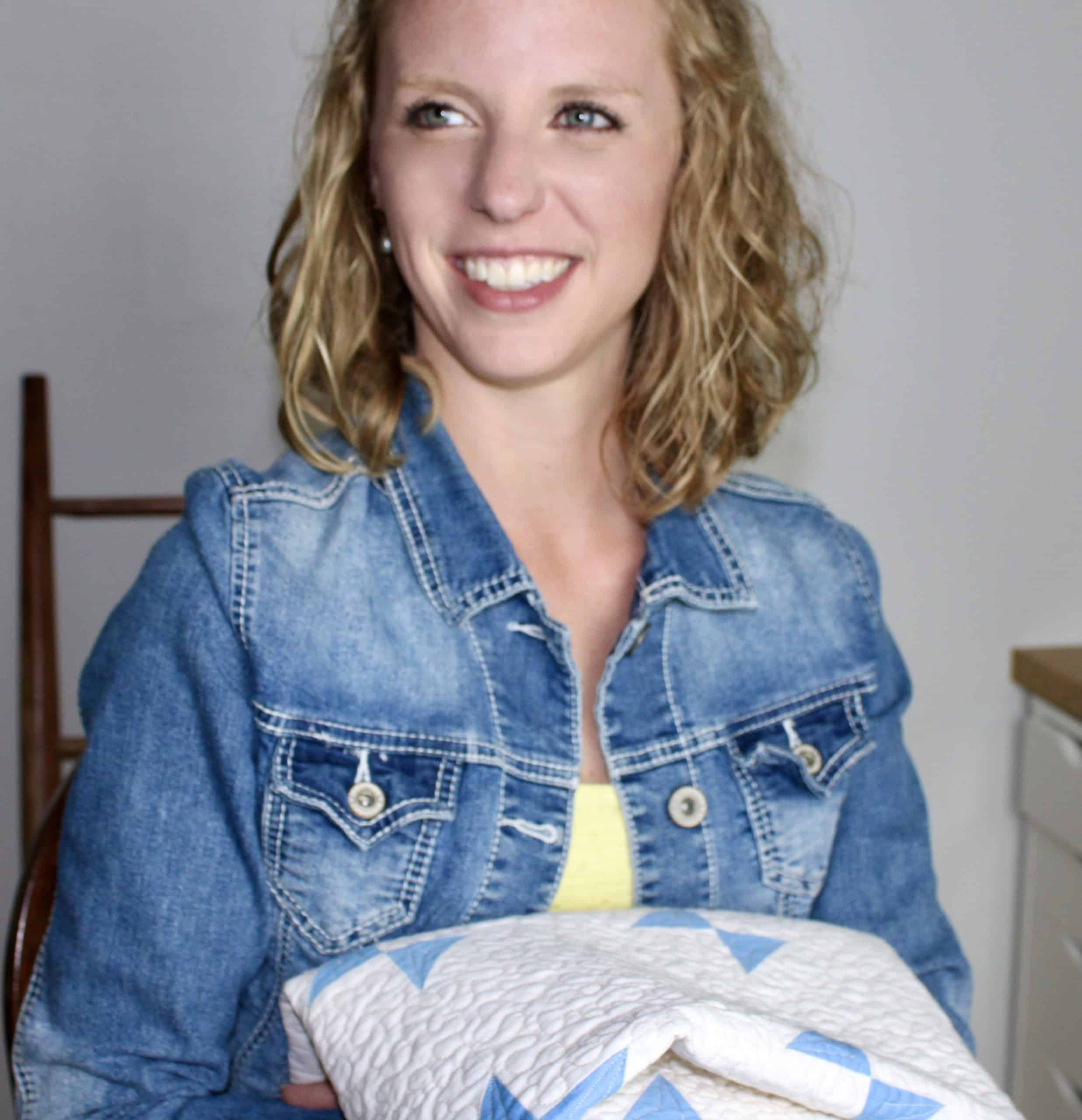
Today I wanted to show you one of my favorite tricks for getting perfectly lined up seams in your quilts every time. It’s the concept of “Nesting Seams”.
This is not an intuitive thing to do in your first quilt but certainly a technique that makes a huge difference in the perfection of your quilt top.
Although the technique does take a little bit of forethought, its incredibly simple to do and makes assembling all of your quilt blocks later super simple!
What does it mean to “Nest Seams”?
When you press your seams one way or the other, you are naturally going to have a larger fold on that side of the seam on the front side.
When assembling your rows of quilt blocks later, that little bulk in the seam will allow rows of seams to kind of “hook” on to each other, also known as “nesting”.
This makes lining up those seams easy to get right the first time every time because you aren’t guessing if they are lined up right, you can actually feel it with your hands as you pin.
Nesting seams is a great technique to keep in your quilting tool box, so let’s get going with how to do it!
Planning ahead
To make this technique as easy to complete as possible, it requires a little forethought.
For the technique we want the seams between your quilt blocks, not only pressed to the side, but we also want each row of quilt blocks pressed in alternating directions.
So step one, press all of the seams in a row to the same side
Step two, press each row of blocks to the opposite side based on the row before.

What about pressing open?
Pressing open, while good for distributing the bulk within a seam, is not great for this technique because it doesn’t allow anywhere for the seams to nest to.
With a seam pressed to the side, you’ll notice the turn of the fabric on that side of the seam creates a lip compared to the other side of the seam.
That lip is what makes or breaks this technique.
By intentionally nesting seams, you are actually performing the same bulk distribution of fabric in the seam anyway.
Regardless of which way you press, you get two pieces of fabric in that seam allowance on either side, so we might as well give ourselves a little extra help matching up those seams at the same time!
So while it’s not impossible by any means to get perfectly lined up seams with those seams pressed open, it’s just not desirable for this specific technique.
Nesting seams in place

Take your two rows of blocks and put them right sides together to make your seam.
Instead of just pinning at random, focus on where those seam intersections are going to be first.
I usually start in the middle and work my way to either side, but which intersection you start with really doesn’t matter.
Line your two seams up so they are roughly on top of each other.

Using your fingers, and keeping the pressed seams to opposite sides, wiggle the two seams back and forth.
You can pretty easily feel the difference between when the two seams are sitting on top of each other and when they fall into line with each other.
You can also feel when the seams are too far apart from each other creating a gap.
The goal is to have the “turns” of fabric created by pressing your first seams to the sides hook on to each other and sit nicely into each other creating an even layer of fabric across where the seams meet.
Double Check and Pin

You can double check your seam nesting by holding the two fabrics firmly with one hand and gently prying open the seam slightly at the top end.
You will be able to see how your two fabrics are currently intersecting.
If it looks good, great! Pin that bad boy in place.
If it’s not quite there, keep wiggling until it looks the way you like.
My biggest tip for pinning is to pin both sides of the seam.
I don’t want my seam being pushed or pulled in the wrong direction by the feed dogs of the sewing machine.
By pinning on both sides of the seam, that fabric is going absolutely no where and you should get a great result.

Stitch it up!
You can do this one of two ways depending on how confident you are with nesting seams.
If you are new to the technique and aren’t sure if it’s going to come out quite right, you can try using basting stitch first to set the seam and “audition” the placement.
Basting a seam is when you set your stitch length as long as it can go, a setting at least 4 or above.
Don’t backstitch anywhere and just sew right over your seams with your 1/4” seam allowance pulling out your pins as you go.
Pull the top out of the sewing machine and check your seam alignment out.
If you don’t like how the seams met, the super long stitch makes it easy and quick to rip right out and try again.
If you like how they sit, put it right back in the sewing machine and bring your stitch length back down to a normal 2.5 ish length and go back over the whole thing.
Your basting stitches can just live in the quilt forever with no harm.

If you are confident with the method and your seam alignment, just go right ahead with your final stitch length and sew her up!
When you press these open feel free to press however you like, it’s usually a final seam so it doesn’t matter which direction you press.
I usually press open in this case to distribute bulk, however, its totally preference at this point and won’t make a difference one way or the other later.
When you are all finished up head on over to the ironing table, press it open and see how you did!
If you found this tutorial helpful, be sure to check out more of my quick piecing tips and don’t forget to follow me on Pinterest below to see all of my latest tutorials when they get released!









0 Comments